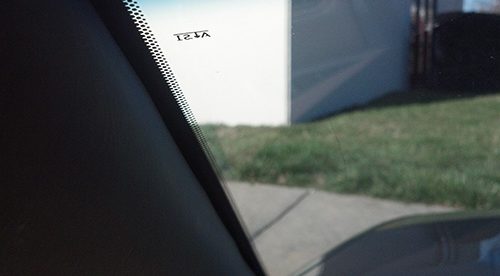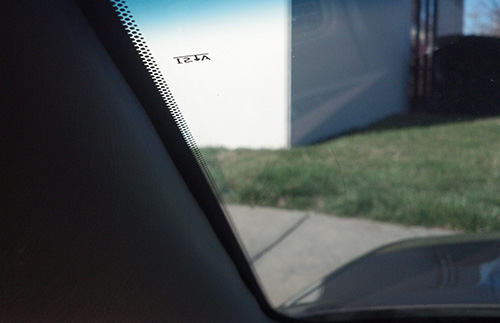What Are All Those Dots On My Car’s Windshield?


Next time you’re in your car, take a look at your windshield. And no, I don’t mean through your windshield — hopefully you’re already doing that when you drive. Before you turn the engine on (don’t do this while the car is in motion!), check out the edges of the windshield. Or, just look carefully at the image above. Either way, you’ll see them — a pattern of black dots just inside the edge of the glass.
What are those? And why is it there?
Let’s start with the black band on the outside of those dots. That’s called the “frit band,” and it’s basically ceramic-based paint. The paint, though, isn’t just slathered on the glass. It’s baked into it, giving the glass “an etched surface” as described by one glass repair shop. (The image above is from that website, too.)
And that paint has to be there — because otherwise, it’d be really hard for you to you drive. The windshield needs to be attached to the rest of the car somehow, and typically, that’s done with glue. It’s a special glue — a urethane sealant — but like most glue, it doesn’t bond with glass all that well. The primary goal of the frit band is to solve that problem. Car manufacturers (and body shops) apply the sealant to the etched surface provided by the frit band.
But that’s not all our black band does. Our cars are exposed to sunlight pretty much around the clock (unless you park in a garage). That means the windshield is constantly being bombarded by ultraviolent light — and if you’re glue, that’s bad. As Jalopnik notes, the frit band helps here, acting like a kind of sunscreen: “[it] prevents ultraviolet sun rays from deteriorating the urethane sealant.” And that’s important: “the last thing you want is the sun to cook your adhesive, and send your window flying out the next time you hit a speed bump.”
So that’s why the black band is there, but why the dots? The black band, it turns out, causes a new problem: heat absorption. Black materials tend to retain more heat than transparent ones, and that’s true in the case of windshields as well. As Mental Floss explains, “when the glass is bent in an oven, the frit heats up faster than the rest of the windshield because it’s black. To reduce optical distortion as a result of this thermal disparity, a dot gradient is used to even out the temperature.” As the dots get further and further from the frit band, they get smaller and smaller specifically to account for this.
Like many features of cars, the dots are, therefore, a safety feature — one we barely notice and often take for granted.
Bonus fact: If you want to keep your windshield clean of dirt and debris, you may want to give it a spritz of windshield wiper fluid. The blue liquid, in the United States at least, contains something called methanol, a form of alcohol which you probably shouldn’t be drinking because it’s really, really toxic. Unfortunately, drinking wiper fluid isn’t unheard of, and in 2018, the EU significantly restricted the allowed amount of methanol “to reduce the incidence of severe methanol poisoning following deliberate misuse of windshield washing fluids and defrosting fluids containing methanol by chronic alcoholics.”
From the Archives: The War Against Pyrex: Another case of hot glass.
